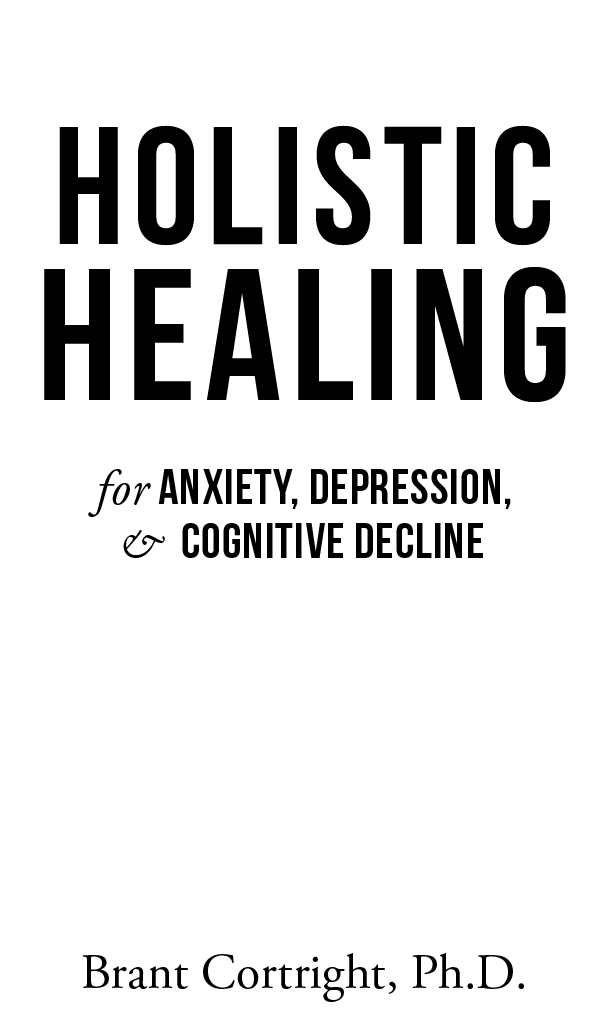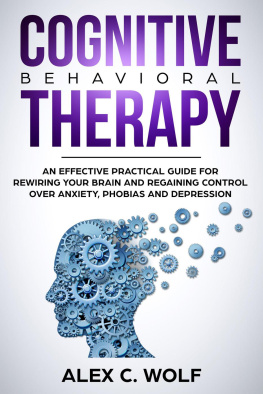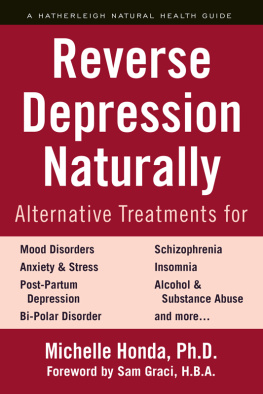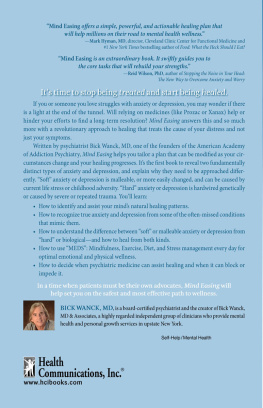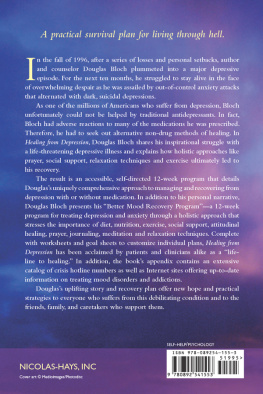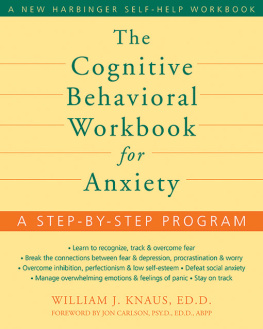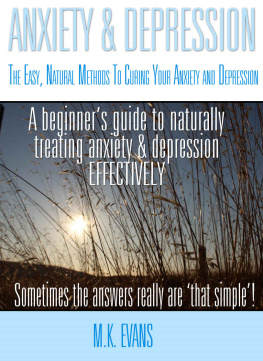Copyright 2020 by Brant Cortright, Ph.D.
All rights reserved
Published by:
Psyche Media | |
135 Forrest Ave. |
Fairfax, CA 94930 |
Cover design: Derek Murphy
Copy Editor: Madeline Hopkins
This book is for educational purposes only. Neither the publisher nor author is engaged in rendering professional advice or services to the individual reader. The ideas, procedures, and suggestions in this book are not intended as a substitute for consulting with a health care professional. If you know or suspect you have a health problem, you should consult a health professional. The author and publisher specifically disclaim any liability, loss, or risk, professional or otherwise, allegedly arising as a consequence, directly or indirectly, of the use and application of any of the contents of this book.
ISBN: | 978-0-9861492-2-1 (paperback) |
978-0-9861492-3-8 (e-book) |
Table of Contents
The Problem:
Why Have Mental Health Disorders Skyrocketed in the Past 50 Years?
If you feel bad, youre not alone.
Mental health problems have exploded over the last five decades. Childhood rates of depression and anxiety are five to eight times greater than they were in the 1950s and 60s. This isnt due to better diagnosisthe same standardized tests were used then. Plus, now we have sky-high rates of autism, attention deficit disorder (ADD), attention deficit hyperactive disorder (ADHD), eating disorders, and other psychological problems virtually unknown back then.
For adults its a similar picture. One in eight American adults is currently taking an antidepressant, and one-fourth of those have been taking one for ten years or more. One in four American women age 2545 is taking an antidepressant. In 2011, the Centers for Disease Control and Prevention reported that the rate of antidepressant use in the United States rose by 400% between 1988 and 2008. Before antidepressants it was estimated that the number of depressed people was 50-100 per million. Now it is estimated to be a thousand times greater.
Since each chapter in this book could be a book in itself (and each sentence given a reference), Ill do my best to compress a lot of information into a readable space. Not an easy task considering the volume of information available. In 2016 the American College Health Association surveyed 100,000 college students at 53 U.S. campuses and found that 84% of the students felt unable to cope, 79% were exhausted, 60% felt very sad, and more 50% were experiencing overwhelming anxiety. College counseling centers are swamped with students seeking relief from anxiety and depression.
Rates of Alzheimers disease show a similar spike. About 50% of people who reach the age of 85 suffer from Alzheimers or some other form of dementia. In the past 50 years Alzheimers rates have gone up more than tenfold, according to the New York Times . One in ten seniors 65 or older has Alzheimers and one in three seniors dies with Alzheimers or some other dementia. Cognitive decline and mild cognitive impairment, the precursor to Alzheimers, are seen as part of normal aging. But why are rates suddenly rising so quickly?
And its not just happening with common mental health disorders like anxiety and depression, this explosion is also documented in severe mental disorders such as psychosis and schizophrenia. In his revealing book Anatomy of an Epidemic , author Robert Whitaker details the growing mental health crisis in America and the entire developed world. The number of disabled mentally ill has tripled in the last three decades.
Even more alarming: This is all getting worse. According to data from the National Institute of Mental Health, 38% of girls and 26% of boys age 1317 have an anxiety disorder. Ive talked with preschool teachers in despair because a third of their class is on medication. This isnt even grammar school, this is preschool .
This crisis has serious physical consequences as well. Research reported in the New York Times states, Americans with depression, bipolar disorder or other serious mental illnesses die 15 to 30 years younger than those without mental illnessa disparity larger than for race, ethnicity, geography or socioeconomic status.
Depression, anxiety, stress, PTSD, ADD and ADHD, addictions, cognitive decline, and other mental health problems are escalating at rates never before seen. More dramatic statistics like these could go on for pages, but probably its already clear that something is terribly, terribly wrong.
Paradoxically, this is happening when there are more mental services available than ever before. There are more therapists and counselors, more mental health centers, counseling centers, residential treatment centers; more psychiatric medication is being prescribed than at any previous time.
So how can things be getting worse? Why are there more resources available yet a greater need for help ? Why are emotional and mental suffering skyrocketing at this time?
How Did We Get Here?
Why this is happening is considered a mystery. It cant be genetic because the genome takes 50,00070,000 years to change. Therefore, it must be something in the environment, even if epigenetic changes ensue. But what?
Many causes have been proposed. Some psychiatrists attribute the rise to better diagnosis while others blame drug companies that promote medicating away any kind of emotional pain. Holistic health practitioners see things like environmental pollution, food additives, and sugar as culprits. Some people blame video games, cell phones, or social media. Many therapists point the finger either to more absentee parenting or else to parents who indulge their kids and produce entitled young adults who cant handle failure. Yet none of these alone can explain the enormity of the problem.
All the possible causes have one thing in common: They all affect the brain. Moreover, they all degrade the brain in ways that impair healthy emotion regulation.
Why the Brain Is Key
Everyone knows the brain is important, but its easy to overlook how the brain is responsible for the way you experience life. Everything you experience, you experience through the brain. Every part of you, your body, your emotions and desires, your mental thoughts and images, your dreams and spiritual experiences, your very sense of self, and all of your consciousness is experienced through your brain.
The brain is the master integrator of all the levels we exist onbody, heart, mind, and spirit. The brain shapes everything in life. The quality of your brain determines the quality of your life. With a high-quality brain you experience a high quality of life. A low-quality brain yields a low quality of life. A mediocre brain equals a mediocre life.
The health and strength of the self and the brain go together. When the brain weakens, the self weakens. As the brain gets stronger, so does the self. The converse is also true: When the self weakens, the brain weakens. As the self gets stronger, this strengthens the brain.
The physical brain and the psychological sense of self are two levels of one unitary process, two sides of a single coin. Neuroscience and medicine describe the brain; psychology describes the self. Integrating these two languages into a unified whole gives us the most encompassing vision for healing.

